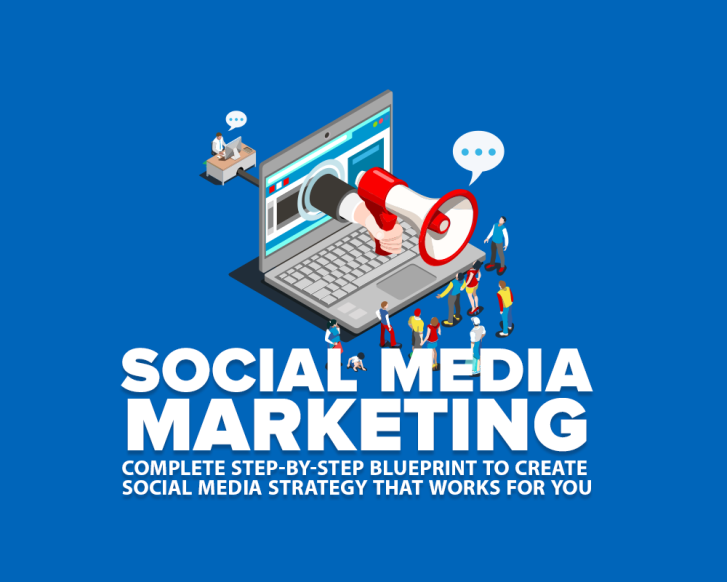Effective Social Media Marketing Strategies for Today’s Digital Landscape
Understanding the Current Social Media Landscape
The social media Marketing landscape has undergone substantial transformations in recent years, reflecting both technological advancements and changes in user behavior. As of 2023, platforms like Facebook, Instagram, Twitter, TikTok, and LinkedIn dominate the space, each catering to distinct demographics and preferences.
Facebook remains the most widely used platform, appealing primarily to users aged 25 to 34, while TikTok has rapidly gained popularity among Gen Z and younger Millennials, marked by its short-form video content that engages users through creative expression.
Instagram, leveraging visual content, attracts a diverse audience, although it notably resonates with users aged 18 to 34. Furthermore, LinkedIn continues to serve as a premier networking platform for professionals, where users generally belong to the 25 to 50 age bracket.
Understanding these demographics is crucial for marketers looking to tailor their campaigns effectively, ensuring that messaging resonates with the intended audience.
User behavior has significantly evolved due to factors including technological shifts, cultural trends, and increasing concern over online privacy.
With the advent of artificial intelligence and machine learning algorithms, advertisers now have more sophisticated ways to target audiences. However, consumers are becoming more discerning, seeking authentic interactions and valuing privacy.
This growing awareness has led to changes in marketing strategies, compelling brands to adopt transparency and engage in ethical practices.
Staying abreast of emerging trends is imperative for marketers to ensure their strategies remain relevant and effective. For instance, the rise of ephemeral content, popularized by Snapchat and Instagram Stories, indicates a shift towards more spontaneous and authentic sharing.
By aligning marketing approaches with these trends, brands will enhance their visibility and engagement levels within the competitive digital landscape.
Creating Engaging Content that Resonates with Your Audience
In the realm of social media marketing, the ability to create engaging content is crucial for ensuring that your efforts yield positive results.
Today’s digital landscape favors a variety of content types that cater to the diverse preferences of online audiences. Utilizing a mix of formats can significantly enhance your engagement rate. Among these, videos stand out as particularly effective; research indicates that video content generates higher levels of interaction and can convey information in a succinct manner. By incorporating visually appealing elements, brands can capture attention and maintain viewer interest, leading to increased shares and comments.
Live streams represent another powerful format that encourages real-time interaction. They provide a unique opportunity to showcase products, host Q&A sessions, and create a sense of urgency by offering exclusive content. This immediacy can foster a community atmosphere where audiences feel connected and valued, further enhancing loyalty.
Enabling viewers to participate directly through comments or questions also drives engagement, making them feel like integral members of your brand’s story.
Infographics are highly shareable and serve as an effective way to present complex information visually. Given their ability to combine data with appealing graphics, infographics can simplify intricate details, making it easier for audiences to digest the information. They are particularly beneficial for educational content that may require more effort for audiences to engage with in long-form text. Stories, often ephemeral, provide brands with the chance to showcase behind-the-scenes moments or user-generated content, creating a sense of authenticity that resonates with users.
Understanding your target audience’s preferences and interests is paramount in all these formats. Tailoring content to meet the emotional and informational needs of your audience not only enhances interaction but also propels the shareability of your posts, thereby maximizing your social media marketing impact.
Leveraging Paid Advertising on Social Media Platforms
In today’s digital marketing landscape, paid advertising has emerged as a powerful tool for businesses to enhance their social media marketing strategies. Leading platforms such as Facebook, Instagram, Twitter, and LinkedIn offer a variety of ad formats that cater to different marketing objectives and audience preferences. These formats include image ads, video ads, carousel ads, and sponsored posts, each designed to engage users in distinct ways.
The primary advantage of utilizing paid advertising is the ability to target specific audiences based on various parameters. Through audience segmentation, marketers can tailor their messages to reach users based on demographics, interests, and behaviors. This level of targeting ensures that advertisements are shown to individuals who are more likely to convert, thereby increasing the overall return on investment (ROI) of social media campaigns. Retargeting strategies further enhance this potential by reaching users who have previously interacted with the brand, reinforcing brand recognition and encouraging potential customers to complete their purchasing journey.
When creating compelling ads, several best practices can be adopted to maximize engagement and conversions. First, it is crucial to craft clear, concise messaging that resonates with the target audience. Incorporating eye-catching visuals and strong calls to action can also elevate the effectiveness of the ad. Additionally, it is imperative to test various ad elements, such as headlines, images, and formats, to determine what works best for the intended audience. Finally, tracking the performance of paid ads through analytics tools allows marketers to assess effectiveness and make data-driven decisions for future campaigns.
Measuring Success and Adapting Your Strategy
In the ever-evolving landscape of social media marketing, measuring success is critical for developing effective strategies. Through analytics and performance tracking, marketers can gain valuable insights into their campaigns, allowing them to assess their impact and make data-driven decisions. Key metrics to monitor include engagement rates, follower growth, and conversion analytics. Understanding these metrics can reveal how well content resonates with the audience and highlight areas where improvement is needed.
Engagement rates, for instance, represent the level of interaction users have with your posts, including likes, shares, comments, and saves. A high engagement rate often indicates that your content is engaging and relevant to your target audience. Conversely, low engagement may suggest the need for content adjustment or a reevaluation of your audience targeting. Follower growth, on the other hand, provides insight into brand visibility and attractiveness. A consistent upward trend indicates successful brand awareness efforts, while stagnation or decline may warrant a change in strategy.
Moreover, conversion analytics track the effectiveness of social media efforts in driving desired actions, such as website visits, sign-ups, or purchases. By closely monitoring these conversions, businesses can determine the return on investment (ROI) of their social media marketing strategies. Analyzing this data allows marketers to adjust their tactics, enhancing their overall effectiveness.
Additionally, A/B testing is a powerful tool that can refine marketing efforts by comparing two variations of content to identify which performs better. This iterative process not only maximizes ROI but also fosters a culture of continuous improvement in social media marketing strategies. By integrating analytics with A/B testing, marketers can effectively adapt their approaches, ensuring sustained success in the dynamic digital landscape.




